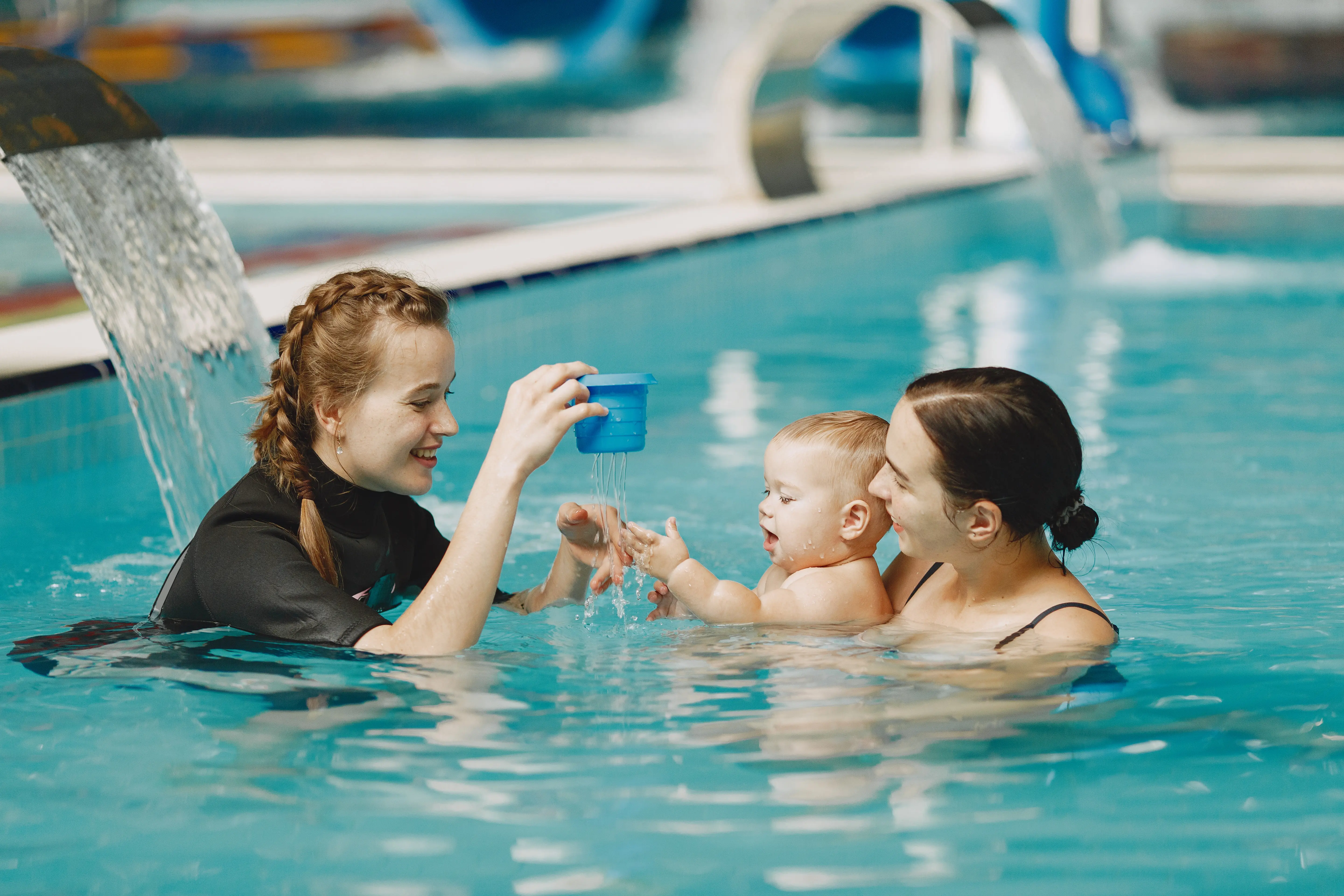23.04.2024
Pool and babies
Infant swimming has become a popular activity for babies. It not only improves the baby's physical activity, but also strengthens the immune system and stimulates sensory development.
An infant pool must meet certain norms to ensure the safety and comfort of babies during infant swimming activities. Let's break down the basic norms:
Water temperature
Water temperature should be kept between 30-32°C. This is the optimum range for babies as it helps them stay warm and prevents hypothermia.
Depth of the pool
The depth of the pool should be up to 60 cm so that the infant can stand on the bottom with the water reaching up to shoulder level.
pH level
The pH level should be maintained between 7.2 and 7.6.
Sulfuric acid, which is often used in standard public pools, is not suitable for pH control in baby pools because it increases the total dissolved solids level in the water and adds unnecessary sulfates. Hydrochloric acid (hydrochloric acid) is used in infant pools. It effectively lowers pH levels without side effects, does not irritate mucous membranes, and does not cause dryness or allergic rashes on infants' skin.
Water disinfection
Pool water should be clean and free of bacteria and other contaminants. This can be ensured by using a filtration and sanitizing system.
Combining chlorination with ozone and UV is a safer and more environmentally friendly solution.
When chlorinating water, the level of free (residual) chlorine should be at least 0.3 mg/l (for combined treatment method - at least 0.1 mg/l), bound chlorine - no more than 0.2 mg/l.
Concentration of free chlorine in the air at a height of no more than 1 meter above the water mirror should be no more than 0.1 mg/m, the presence of ozone is not allowed.
Water mirror area and total water exchange
According to SP 2.1.3678-20 in children's pools up to 60 cm deep, the water mirror area should be at least 3.0 square meters/person. Full water exchange should be no more than 30 minutes.
Safety
The pool should be equipped with non-slip flooring and a ladder or ramp for safe entry and exit. A rest area for parents and infants should also be provided.
Environment
The pool should be located in a warm and well-ventilated area. Noise levels should be kept to a minimum so as not to frighten infants.
Frequency of industrial control of swimming pool water
For safe swimming in the pool, it is important to consider not only the norms in cleaning and construction, but also timely water control. The table shows the necessary frequency of control of the main indicators.
|
Indicator |
Control frequency |
|
Water in the pool |
|
|
Turbidity |
1 time during working hours |
|
Colorfulness |
|
|
Odor |
|
|
Temperature |
|
|
Hydrogen pH |
before starting work and every 4 hours thereafter |
|
Residual bound chlorine |
|
|
Residual free chlorine |
|
|
Ozone (by ozonization) |
|
|
Permanganate oxidizability |
once a month |
|
Chloroform |
|
|
Formaldehyde (during ozonization) |
|
|
Ammonium nitrogen |
|
|
Total microbial count (TMC) |
once a week |
|
Total coliform bacteria (TBC) |
|
|
Thermotolerant coliform bacteria (TCB) |
|
|
Coliphages |
|
|
Staphylococcus aureus (Staphylococcus aureus) |
|
|
Pathogens of intestinal infections |
for unsatisfactory tests for BSE, OCB and/or TKD. |
|
Pseudomonas aeruginosa (Pseudomonas aeruginosa) |
|
|
Giardia cysts |
|
|
Helminth eggs and larvae |
|
|
Legionella (Legionella pheumophilia) |
|
|
Water zone air |
|
|
Chloroform |
at chloroform concentration in water more than 0.2 mg/l |
|
Chlorine |
|
|
Temperature |
1 time during working hours |
|
Relative humidity |
|
|
Mobility |
before opening and after repair or replacement of ventilation equipment |
|
Other indicators |
|
|
Water surface illumination |
Before opening the pool and after repair or replacement of lighting, ventilation and other equipment. |
|
Sound level |
|
